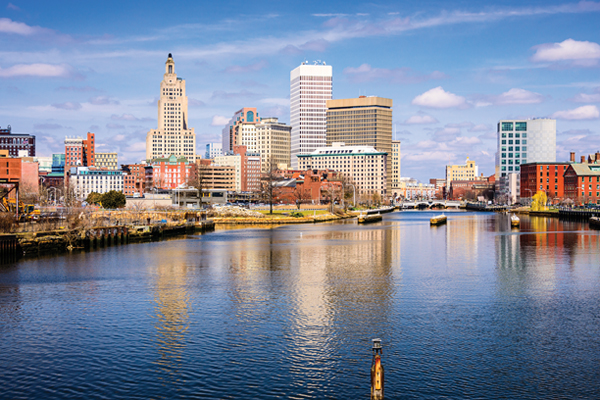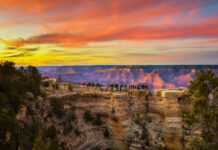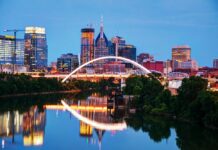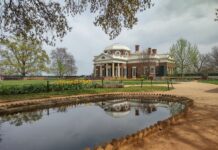The first weekend in October, I visited Providence, R.I., with my husband, Rick, and our 17-year-old son, Jackson. This wasn’t an all-purpose, get-to-know-a-cool-city trip, however. We were three members of a tribe I’ll call people touring colleges (PTCs), and as such, our focus was narrower: We were after the Providence that a Brown University undergraduate would experience, because Jackson, a high school senior, was thinking seriously of applying there.
We would have about 24 hours for our explorations, culminating in a Monday 9 a.m. tour and 10:15 information session on the Brown campus, before heading back home to Baltimore. Around noon on Sunday, we took our exit off I-95 and began making our way to College Hill. Brown sits at the top of that hill, and the Rhode Island School of Design, which everyone calls RISD (pronounced “RIZ-dee”), is nestled halfway down. At the bottom of the hill is the Providence River, which winds through the center of the city, separating College Hill (to the east) from the downtown (to the west).
The city’s historic past—it was founded in 1636 by Roger Williams—is visible throughout College Hill, where centuries- old brick buildings stand alongside boxy postmodern enclosures. Providence is a relatively small city, with a population of 179,207, according to 2015 U.S. census data. But it has a larger and more cosmopolitan feel, thanks in part to the presence of Brown, RISD and other institutions that attract students from all over, including Providence College and Johnson & Wales.
First, we parked beside the RISD Museum and navigated the sloping brick paths surrounding the campus buildings. risd|works is a RISD Museum retail store and gallery that stocks items designed and made by alumni and faculty, while risd:store offers art supplies, with aisles full of paint and what seems like every kind of sketch pad ever made. There’s also risd:store 3D, which specializes in hardware items and sculpture supplies. Brown and RISD have a close bond; students from each school are allowed to take classes at the other.
Next, we ascended College Street to the Van Wickle Gates, the ornamental entrance to the Brown campus. This afternoon, I’d be our unofficial tour guide, because decades earlier, I’d been a first-year student at Brown myself. I’d walked these green expanses, ducked into and out of these academic buildings, and studied at these libraries. Unfortunately, because of what could most easily be described as profound homesickness, I had ultimately transferred to Johns Hopkins, which was closer to home, but that was no reason not to encourage Jackson’s interest in Brown. Back on campus this October afternoon, I could easily recall what had drawn me to Brown in the first place.
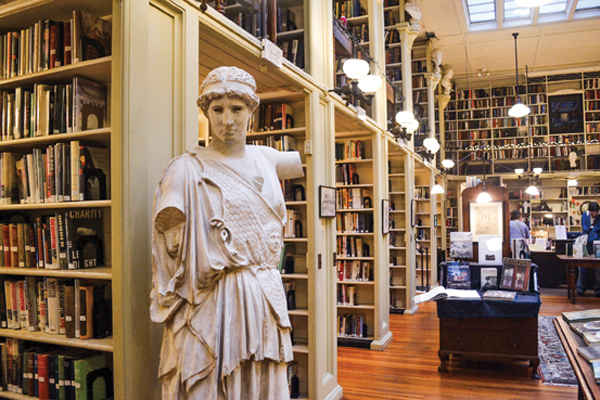 It being Sunday, the campus was relatively quiet. With the students off in dorms and libraries, the buildings, trees and outdoor art seemed especially eye-catching. For instance, Henry Moore’s “Reclining Figure No. 2—Bridge Prop” (1963) is a focal point on the Main Green. Not far from that stands a life-size bronze statue of a Kodiak bear, the school mascot, which was sculpted by Eli Harvey and cast in 1923. In addition to its many permanent pieces, the campus houses temporary installations.
It being Sunday, the campus was relatively quiet. With the students off in dorms and libraries, the buildings, trees and outdoor art seemed especially eye-catching. For instance, Henry Moore’s “Reclining Figure No. 2—Bridge Prop” (1963) is a focal point on the Main Green. Not far from that stands a life-size bronze statue of a Kodiak bear, the school mascot, which was sculpted by Eli Harvey and cast in 1923. In addition to its many permanent pieces, the campus houses temporary installations.
In search of a late lunch, we headed onto Thayer Street, a strip of student-friendly stores and restaurants on the east side of campus. We decided on East Side Pockets, a casual Mediterranean spot whose offerings were as good, filling and inexpensive as the online reviews had promised. Next, there was the de rigueur pass through the college bookstore, where Jackson picked up a T-shirt. Though it had been years since my Brown days, the students I was seeing that afternoon—grabbing lunch, headed to the gym or library, hanging out over coffee with friends—reminded me of the bright, well-rounded people I had gotten to know there.
After checking into our hotel, a downtown Courtyard by Marriott about a block from the river, Rick and I walked to the lovely Symposium Books, then rejoined Jackson in our room to discuss dinner. Again, the smartphones came out, and the Yelp oracle was consulted. Flatbread Company, just off of Thayer Street, looked perfect, and it didn’t disappoint. Local families mixed with students over generous salads, innovative pizza offerings cooked in a big brick oven and appealing drinks.
The next morning, we left our car at the hotel and set out once again on foot—a smart choice, given how walkable the city center is. We made our way to one of the bridges that cross the Providence River, noting the braziers that line the river—structures associated with the fire sculpture installation known as WaterFire, which occurs on designated nights throughout the year and was the vision of artist Barnaby Evans. We stopped halfway up College Hill at the colorful Cafe Choklad for coffee and pastries, then made our way to admissions.
Last year, Brown received more than 29,000 applicants (of whom about 2,600 were accepted and about 1,500 enrolled), so we weren’t surprised to find the admissions area packed. When you’re college shopping, you can’t help but pay attention to the other families who’ve chosen to tour that college as well, since your child’s future classmates (if your child is accepted, that is—often a big “if”) would be drawn from a group like this. This was a low-key bunch, and they remained relaxed and friendly as we all moved outside into the sunny Monday morning to hear from the four tour guides and decide, based on the guides’ majors or extracurricular interests, which student’s group we’d join. Rick, Jackson and I chose a smart, not-overly-serious cognitive science major from Long Island who shared fun anecdotes, stats and facts. He explained things that were new on campus since my time there, such as Martin Puryear’s “Slavery Memorial” (2014), a sculpture reminiscent of a ball and chain. To quote from its plaque, “This memorial recognizes Brown University’s connection to the trans-Atlantic slave trade and the work of Africans and African-Americans, enslaved and free, who helped build our university, Rhode Island, and the nation.”
Finally, we all moved into the List Art Building for a useful info session conducted by a current Brown undergraduate and an admissions officer.
The college trip was quite worthwhile. Soon, the applications will go out, and then we PTCs will evolve into PWNs—people waiting for news.


